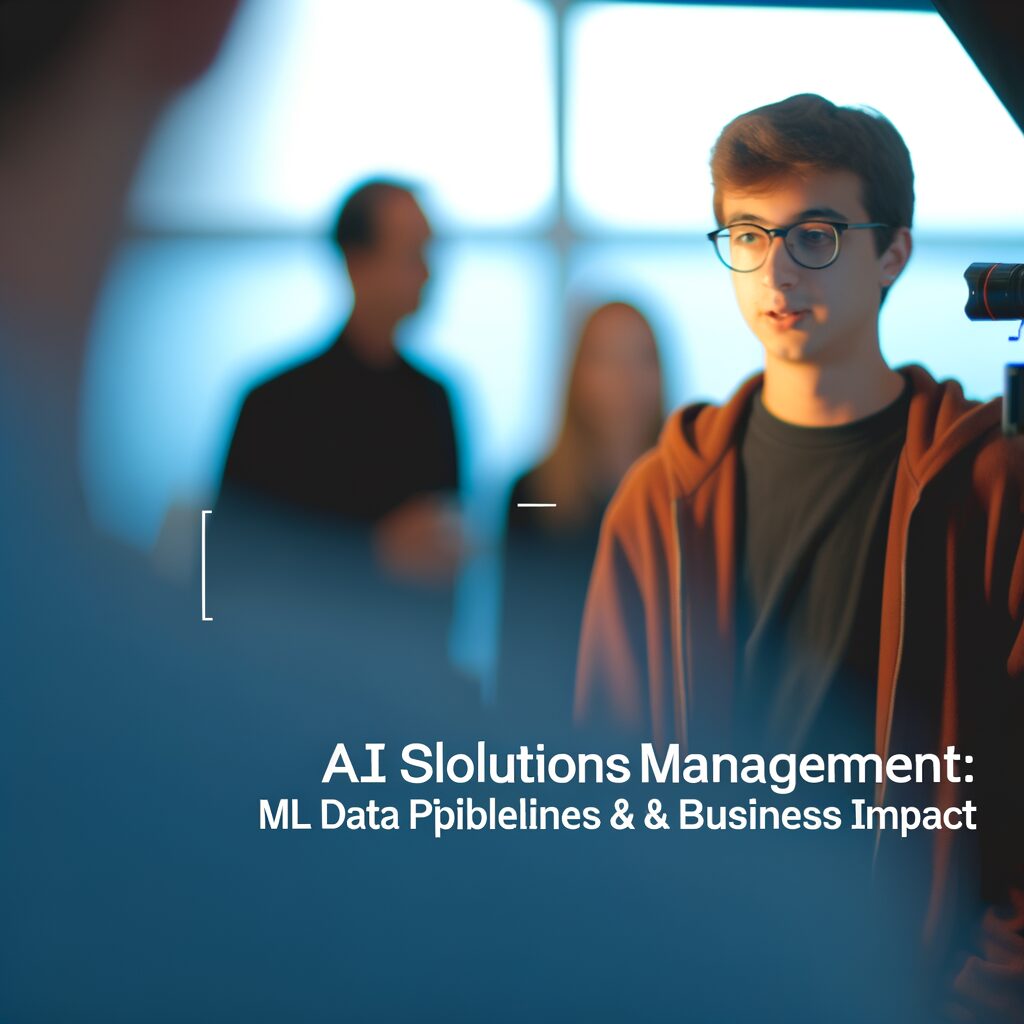AI Solutions Managers bridge the gap between technical AI systems and business strategy, ensuring machine learning models deliver measurable value. This guide explores the core technical frameworks, strategic decision-making, and pitfalls to avoid—equipping professionals to lead AI initiatives with confidence. Whether you’re transitioning into the role or scaling your expertise, these insights will sharpen your approach.
Foundations: Machine Learning Types and Data Pipelines
Understanding machine learning (ML) paradigms is the first step in designing effective AI solutions. Each type serves distinct business needs:
- Supervised Learning excels when historical labeled data exists (e.g., predicting equipment failures using maintenance logs). Algorithms like XGBoost dominate tabular data, while SVMs handle high-dimensional spaces.
- Unsupervised Learning reveals hidden patterns—retailers use K-Means clustering to segment customers without predefined labels.
- Reinforcement Learning powers adaptive systems like robotics, where trial-and-error learning optimizes actions (e.g., warehouse robots navigating dynamic environments).
A robust data pipeline transforms raw inputs into actionable insights. For example, a fraud detection system might:
- Ingest transaction logs via Kafka streams.
- Preprocess data with PySpark to handle missing values.
- Engineer features like transaction frequency per user.
- Serve predictions via FastAPI with latency under 100ms.
Visual: A flowchart showing the pipeline stages with tool examples.
From Model Selection to Business Alignment
Choosing the right model hinges on problem framing. A time-series forecasting project for supply chain demand might use Prophet for interpretability or LSTMs for complex patterns. Meanwhile, NLP tasks like contract analysis demand transformer-based models (e.g., BERT).
The AI Use Case Framework ensures technical efforts align with business goals:
- Problem Framing: A healthcare provider might target reducing patient readmissions (KPI: 20% decrease).
- Data Evaluation: EHR data may need annotation for supervised learning.
- Value Estimation: Projected $1M savings from avoided readmissions justifies labeling costs.
ROI communication is critical. Present:
- Baseline pain points: “Manual inspections miss 30% of defects, costing $500K/year.”
- Scalability: “This CV model can expand to 10+ production lines.”
Avoiding Pitfalls and Driving Adoption
Common failures stem from misaligned priorities. A chatbot project faltered because stakeholders prioritized “coolness” over reducing call center volume. Mitigate risks by:
- Validating data quality before modeling (e.g., checking for label leakage).
- Monitoring concept drift in production (e.g., retail demand shifts post-pandemic).
- Securing cross-functional buy-in early—finance teams care about breakeven timelines, not F1 scores.
Example: An energy company deployed an anomaly detection model but saw low adoption because field technicians distrusted “black box” alerts. Adding explainability (SHAP values) increased uptake by 40%.
Conclusion
AI Solutions Managers must master both technical depth and strategic storytelling. By grounding ML approaches in business objectives, architecting scalable data pipelines, and quantifying impact, you’ll transform AI from a buzzword into a revenue driver. Ready to level up? Audit your next project against the Use Case Framework—and remember: the best AI solves problems humans care about.


